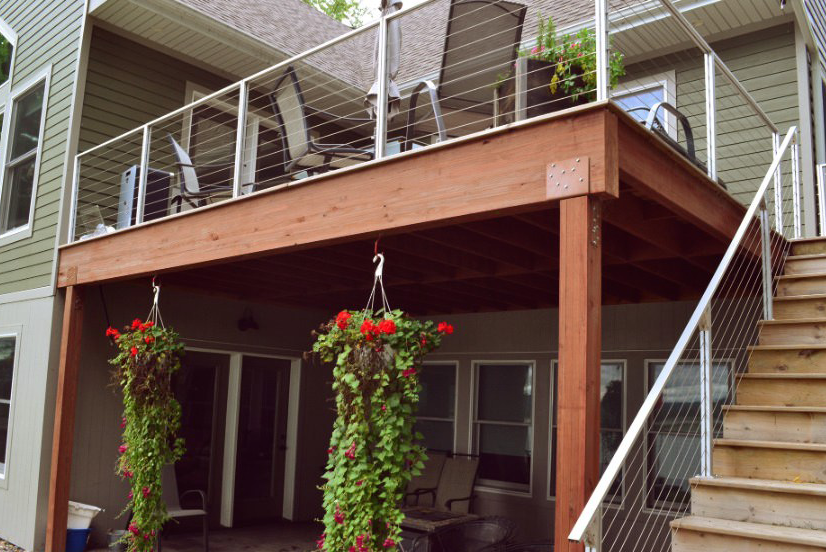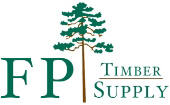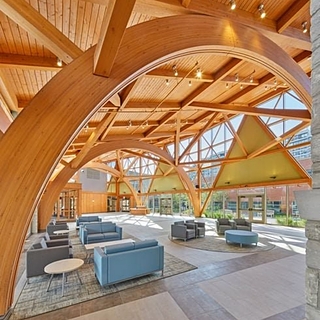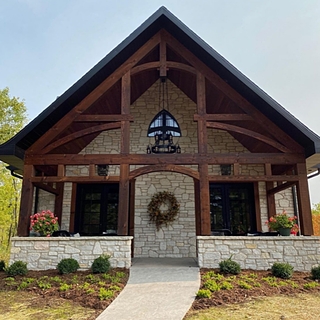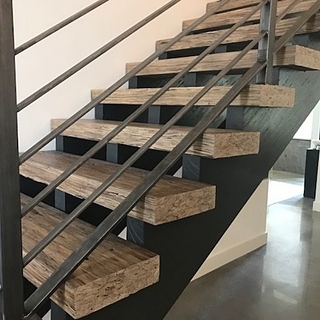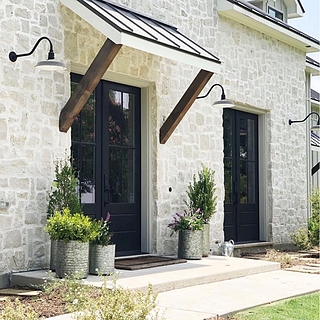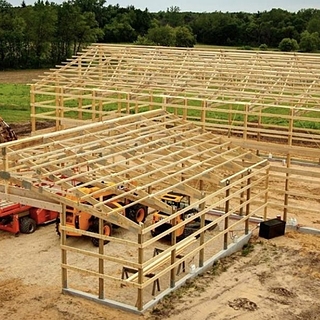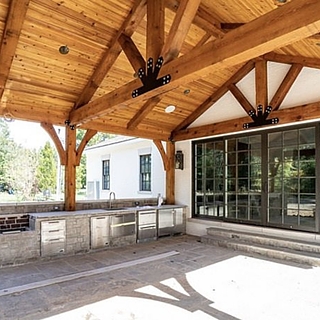Design Ideas
We get asked all the time, "What product should I use for this application?". While it can be a subjective process, below are just some ideas or things to consider.
Exterior Exposed Timbers
If your timbers are going to be exposed to the weather, even if slightly covered, there are some things to consider.
- In general, exposure to the weather requires you to think about the longevity of the product. Heavy exposure will challenge the timber and its lifespan will be shorter than if it were inside.
- If the timber is going to be hard to replace, go for quality and longevity.
If looking for traditional solid sawn timber, you effectively have two choices: Cedar or Douglas Fir.
Comparing Cedar versus Douglas Fir Timbers in Exterior Exposed Applications
Exterior Cedar Timbers
- Pros
- Beautiful even coloring and grain
- Much longer lasting than Douglas Fir. Cedar is packed with natural oils and resins that make it naturally resistant to rot, decay, and insects. It's the best performing wood species.
- Can be left raw and will naturally gray out, or can be finished to your desire
- Lightweight and easy to work with
- Cons
- More expensive than Douglas Fir (sometimes double the price)
- Not as structurally strong or supportive. Some bearing applications are better with Douglas Fir.
- Can check and crack. This has no impact on the strength or lifespan of the timber, it's purely visual
Exterior Douglas Fir Timbers
- Pros
- More affordable than Cedar, especially on really large timbers
- Free of Heart Centers. This helps to reduce the visual checking and cracking that you can see on the timber over time
- Structurally strong and can be designed and engineered into a project
- Cons
- Not as long lasting. You can assume a lifespan that is roughly 2/3rds that of Cedar, and could be shorter if exposed to heavy moisture that isn't properly flashed or drained
- Douglas Fir Timbers have more variability in appearance. While all make the grade, some can look less desirable to the eye than others. It's the nature of the beast.
- Doug Fir Timbers are more susceptible to surface mold. This will show up as a black or dark green mold on the timber. It can be treated and cleaned, but sometimes it will leave a longer term discoloration
- Doug Fir Timbers are heavy and dense. They weigh over 2x the weight of comparable Cedar Timbers. They are also harder on equipment and tools and not as receptive as Cedar.
Bottom line, if looking for an exterior exposed timber, Cedar is the best overall performing Timber. However, there are plenty of applications where a Douglas Fir timber can be an equal choice and save you money.
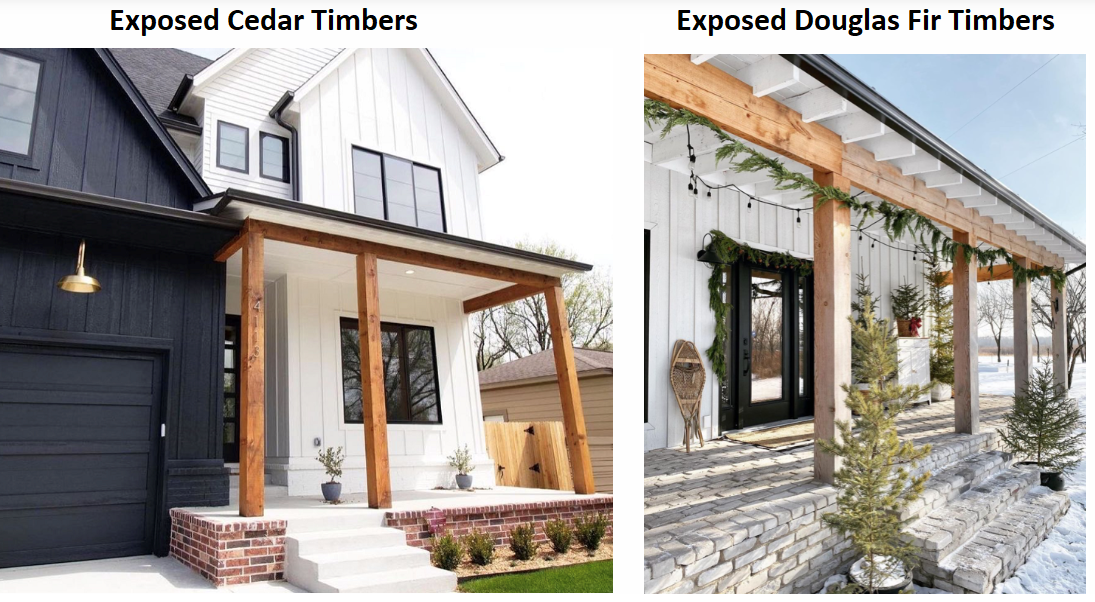
Interior Non-Structural Timbers
Interior Timbers are a growing category of Timbers. They can be used structurally and as a physical structural support of the home, or they can be used more decoratively and as an accent. When using solid timbers for a decoratively exposed timber look, you have two main options: Cedar and Douglas Fir.
Interior Cedar Timbers
- Pros
- Beautiful even coloring and grain
- Lightweight and easy to work with
- Cons
- More expensive than Douglas Fir (sometimes double the price)
- Not as structurally strong or supportive. Some bearing applications are better with Douglas Fir.
- Can check and crack. This has no impact on the strength or lifespan of the timber, it's purely visual
Douglas Fir Timbers
- Pros
- More affordable than Cedar, especially on really large timbers
- Free of Heart Centers. This helps to dramatically reduce the visual checking and cracking that you can see on the timber over time
- Structurally strong and can be designed and engineered into a project
- Can be surfaced to a smooth S4S finish which looks amazing
- Cons
- Douglas Fir Timbers have more variability in appearance. While all make the grade, some can look less desirable to the eye than others. It's the nature of the beast.
- Douglas Fir Timbers can also develop a pitch pocket which releases a resinous sap over time. It rarely occurs, but in an interior application, this can leach and drip onto furniture, carpets, etc. and become a problem.
Bottom line, if you're looking for an interior exposed timber, we think that Douglas Fir Timbers are a slightly better option. They are more affordable, look great, and achieve the natural timber look you're going for.
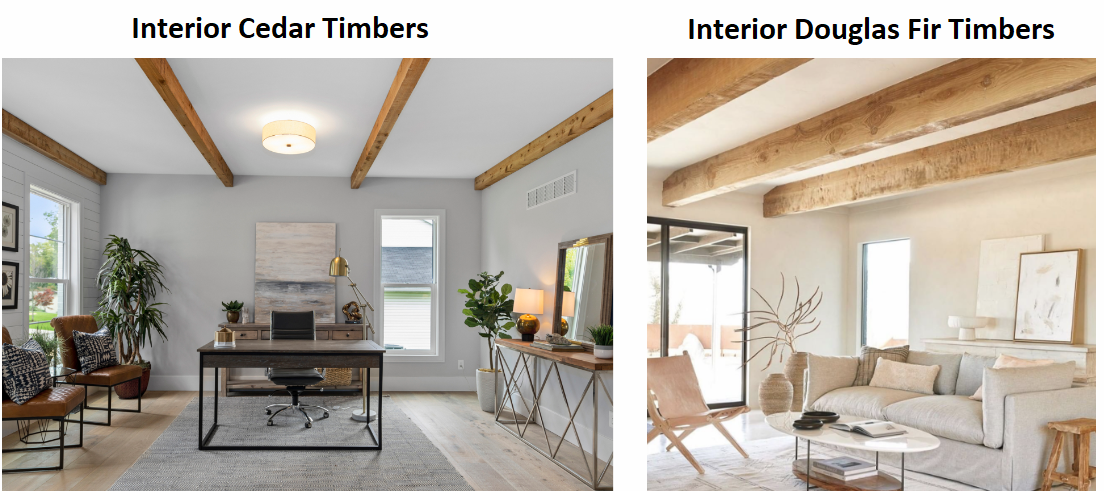
Structural Exposed Interior Timbers
If looking for exposed structural timbers, you really have two options - Douglas Fir Timbers and Glulam Beams and Columns. These have structural ratings that can be designed into your home and predictably perform and carry the needed load for long-term structural integrity.
Douglas Fir Timbers
- There are two main types of framing; light timber framing, and full blown timber framing.
- If doing light timber framing, you are good to use our standard #1 Green FOHC Douglas Fir Timbers.
- If doing a full blown timber framed house, we recommend going to a Kiln Dried #1 FOHC Douglas Fir Timber that is resurfaced after being dried. These are special order timbers for each job. You want a Kiln Dried product to control expansion and contraction and overall movement. You'll also want that timber cleaned up after being dried as the kiln leaves unsightly marks and scars if not resurfaced after drying.
- Douglas Fir Timbers will look like your traditional timbers and look fantastic
- They can be rough sawn or surfaced to a smooth S4S finish
- They will eventually have some checking and cracking. These have no impact on the performance or structural integrity, it's purely a visual change in the timber. There is nothing you can truly do to prevent some checking and cracking.
Glulam Beams and Columns
- Glulam Beams and Columns are engineered products that are layered 2x4's or 2x6's that are glued and laminated together. They have a similar, but different look than solid sawn timber.
- Glulams are more expensive than Douglas Fir Timbers.
- They are very true and predictable. They will be perfectly straight with no bowing, twisting, or warping.
- Glulams work great when designing a post and beam structure. Particularly effective in large span residential and commercial buildings.
Bottom line, it all depends on the type of building you are looking to build and how much exposed timber you are looking to use. Generally speaking, we recommend #1 Green FOHC Douglas Fir Timbers for light timber framing, Kiln Dried and resurfaced Douglas Fir Timbers for heavy Timber Framing, and Glulam Beams and Columns for large span residential and commercial buildings.
Glulam Post and Beam Building:
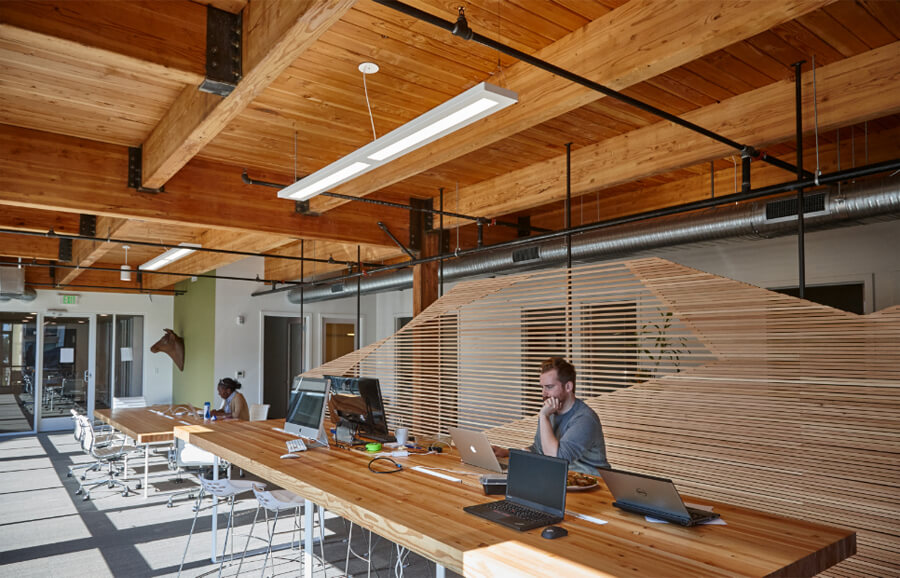
Deck Beams and Columns
Deck beams and columns are one of the most frequent areas where we see poor product selection leading to expensive repairs and fixes. Pretty much every deck system has several posts and a few long support beams and rim joists. For smaller decks, standard treated deck framing works just fine. However, for bigger decks, or very high-end composite decks, use of Treated Glulams in specific locations is a great idea.
Advantages of Treated Glulam Beams and Columns
- Treated Glulam Beams are a easy way to eliminate posts and open the under deck area to better views
- Treated Glulam Beams are perfectly straight, and won't twist, warp, or crook. They stay in the same position when you install them, helping to prevent issues with deck boards moving or popping over time.
- Because they are treated and a large mass timber, they last significantly longer than regular pressure treated lumber and have a long lifespan.
- Treated Glulams are easy to engineer and design into a deck
- They have a beautiful auburn coloring that can be left as is, or they can be painted or stained with an oil based product
Disadvantages of Treated Glulam Beams and Columns
- They are expensive. You can expect to spend 4-5x more on those specific beams and columns than comparable treated.
- They are big and heavy. Some Treated Glulam Beams can weigh upwards of 500 pounds each.
Bottom line, we firmly believe that Treated Glulams are proper investments in large and high-end decks and have a great ROI. They dramatically improve the longevity of the deck and they help to prevent common problems related to deck boards moving and popping that frustrate homeowners.
Treated Glulam Deck Beam and Columns:
